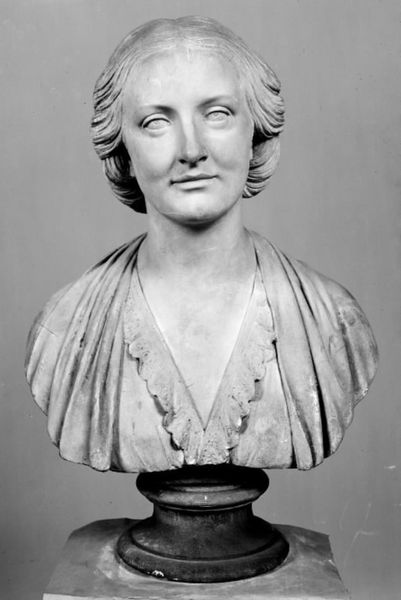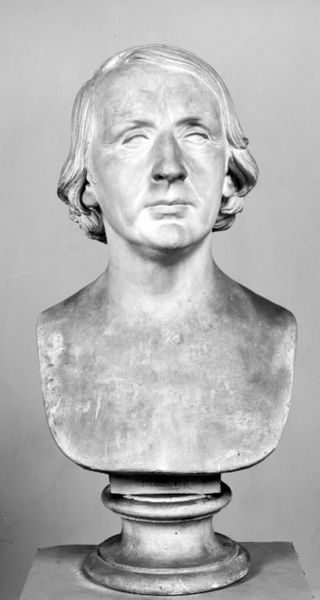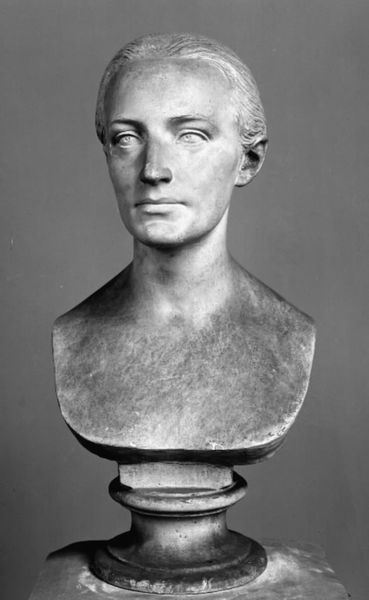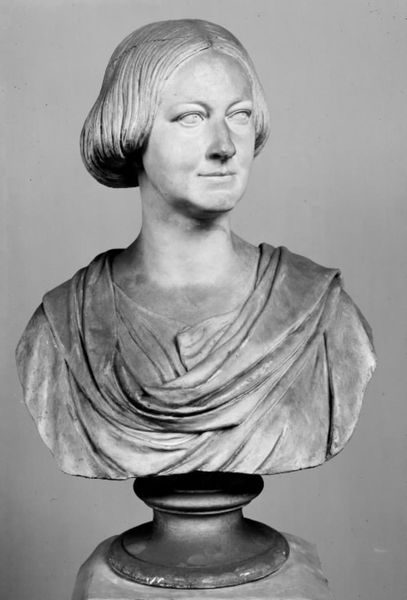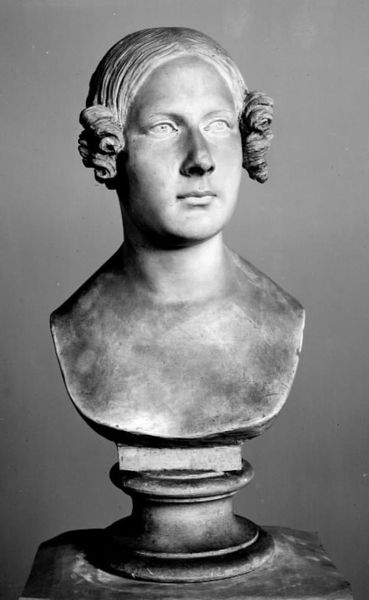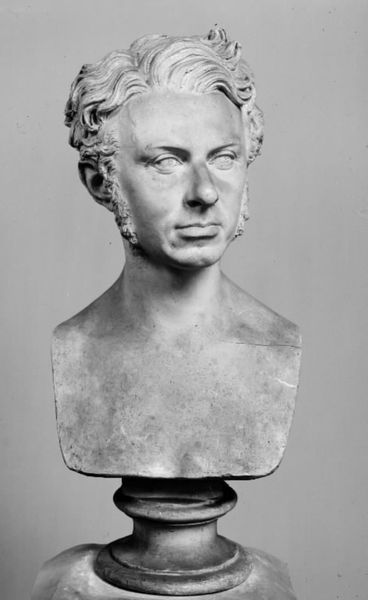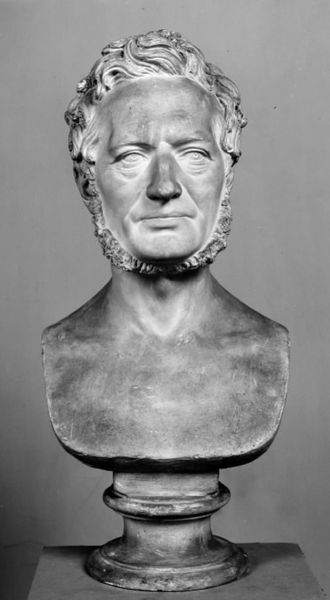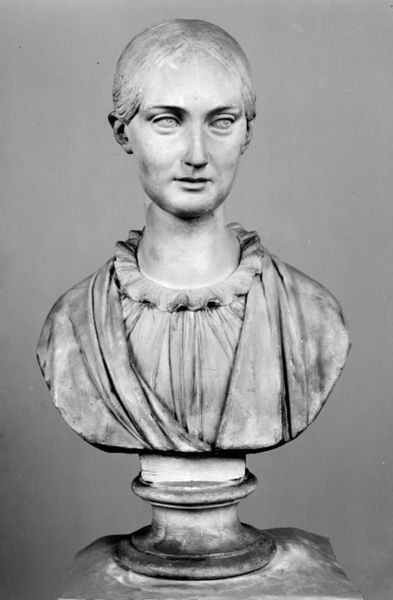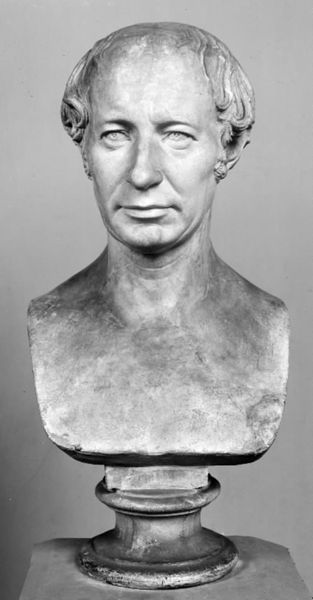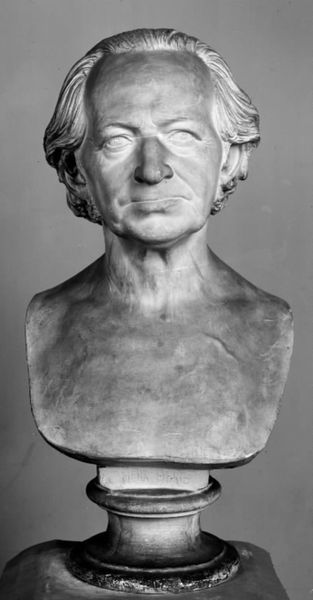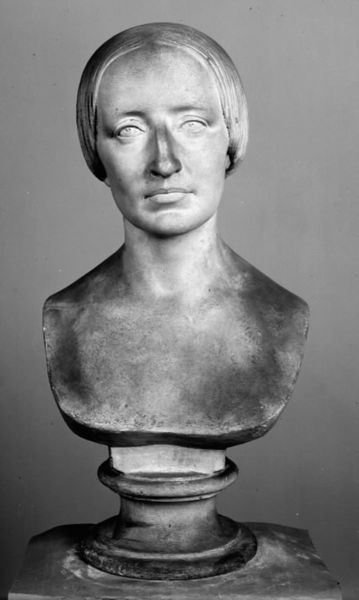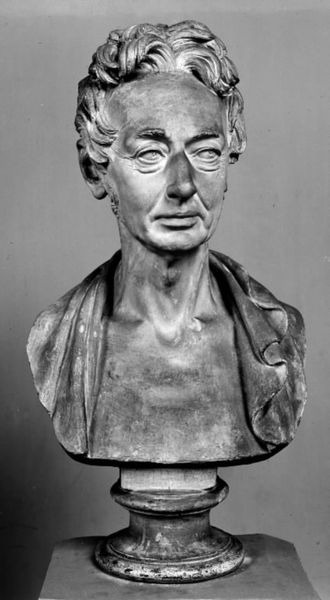
Dimensions: 57.6 cm (height) (Netto)
Editor: So, this is a marble bust titled "Ida Wilde, f. Thiele," created by H.W. Bissen in 1863. It has a strikingly serene and classical feel. The woman's gaze is very direct, even though her eyes are blank. What stands out to you when you look at it? Curator: The stillness is key, isn't it? This lack of expression directs our attention, not towards a specific emotion, but toward a broader ideal. This idealized image of womanhood references classical antiquity while representing a specific person. Do you notice anything familiar in the visual language? Editor: Yes, the drapery over her shoulder, for example, feels very Roman, like a toga. The simple hairstyle too. Curator: Exactly. Consider then the power of Neoclassicism: the values it evokes and attempts to instill by reviving past traditions. It suggests ideals of virtue, beauty, and order, embedding social ideals within this portrait of Ida Wilde. Who do you imagine she was meant to be, seeing her portrayed this way? Editor: I see her now less as an individual and more as a representation, someone elevated to embody particular virtues admired at the time. Sort of setting her apart from the everyday. Curator: Precisely. The symbolism elevates the sitter and embeds her within a cultural memory, continually revitalizing these values for future generations. In this way, she is not just Ida Wilde, but an embodiment of timeless ideals, reborn in marble. Editor: It’s interesting how the absence of color and specific detail helps to create that sense of timelessness. I appreciate the chance to delve deeper into the cultural implications here. Curator: Indeed. Art helps us access these deeper wells of cultural meaning and shared understanding, through a variety of symbols. That’s why history of symbols matter.
Comments
No comments
Be the first to comment and join the conversation on the ultimate creative platform.
